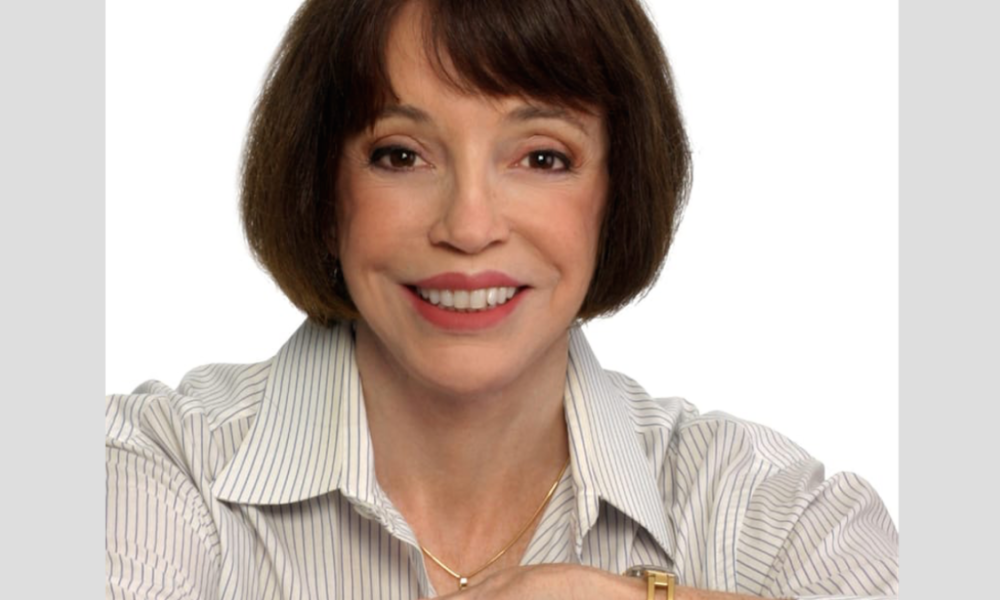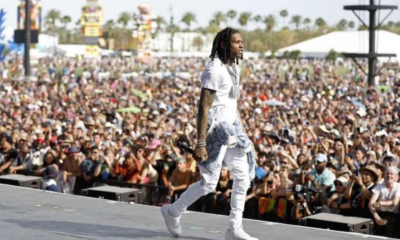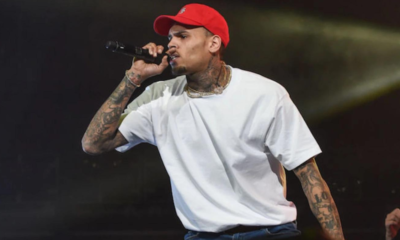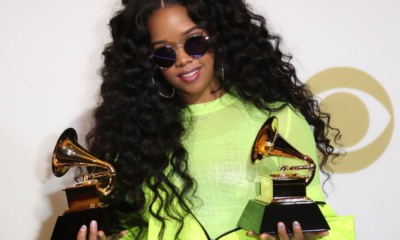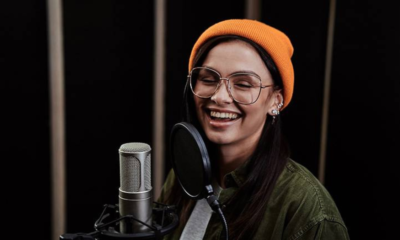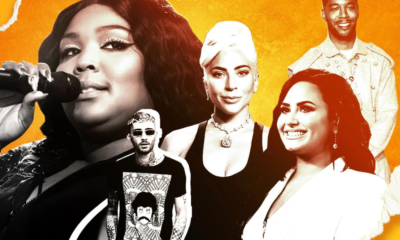Business
Renee Grant Williams Vocal Coach
“Rockers use ‘chest voice’, or ‘belt voice’, and the classical singers use ‘head voice‘, but it all resonates at about the same point”.
Published
2 years agoon
By
Contributor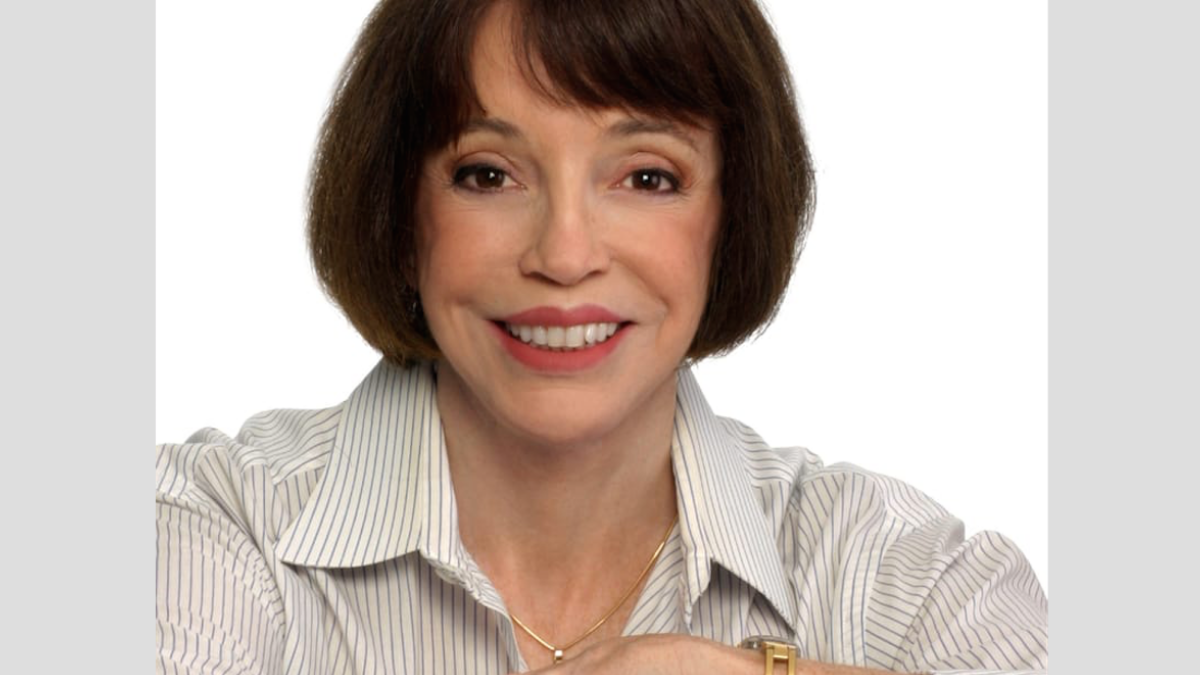
With a few solid decades of experience as a voice teacher, Renee Grant-Williams is an esteemed name in the music industry. She has worked with numerous renowned and respected artists, among them Miley Cyrus, Linda Ronstadt, Faith Hill, Jason Aldean, Keith Urban and Tim McGraw. A trained classical soprano, Renee graduated with a Bachelor of Music degree from the San Francisco Conservatory of Music. She is currently based in Nashville, Tennessee, but also facilitates vocal sessions by Skype, or with the aid of one of her Associate Teachers. Renee also runs a yearly Vocal Master Class, where participants’ voice and performance are critiqued and assessed by a group of qualified panelists. Participants also attend workshops and classes throughout the day and ultimately, Renee’s Vocal Master Class is an environment where valuable connections are made. As a communication skills expert, Renee recognizes the importance of networking, projecting your voice and articulating, essential skills for artists. Her book, Voice Power Book: Using Your Voice to Captivate, Persuade, and Command Attention, presents and teaches these abilities, drawing on personal experiences and professional expertise.
The Vocalist Magazine: How did you get started in your music career?
Renee Grant-Williams: I used to sing in church and I had a big voice. I didn’t really come from an area where a career as a soprano was considered a possibility because I came from a steel mill and coal mining town. There was a time that I was hitchhiking around Europe and I got sick. I was lying under a tree in a rainstorm in a country where it only rains once a year and, of course, it rained on that day. I did one of those, “Dear lord, if you get me out of this, I’ll do something with my life.” I went back to the States and ended up with a full scholarship to the San Francisco Conservatory of Music and they made it very easy for me to be a student there.
TVM: Why did you decide to pursue a career as a vocal coach?
RGW: I was a very active soprano in the San Francisco Bay Area, but classical music, at that time, was just beginning to be unpopular with the masses and although I made a good living, I had to conduct and do a lot of chamber music and a lot of solos in churches and temples. My teacher had an excess of students and he asked me if I would like for him to teach me to teach, so he fixed me up and taught me a lot about how to relate to students, and then he sent students to me. From there on, I got my own recommendations. I didn’t set out to do it. I still sing, but I love teaching.
TVM: What is it about teaching that you really enjoy?
RGW: The reward of seeing people get it. The “Oh, that’s what you mean” [look]. I live for improvement. I’d rather work with a raw amateur than a board professional if the amateur had passion. I find oftentimes, with voice coaching, I want it more for the student than they do.
TVM: What is a typical coaching session with you like?
RGW: Fortunately, they’re all different, which is great. First, I have the person sing for me. Even if it’s someone who has been studying with me a while and wants to work on a particular piece, I have them sing it, and then I go down my checklist of things that can be made better. If it’s a new student, if it’s at a workshop, or if I’m hearing someone for the first time, it’s kind of fun to put my finger on the issue that’s holding them back from singing as well as they would like to and identifying the one thing that can put a Band-Aid on it and bring them the fastest results. I experiment. I try new things on people. If I discovered something that worked with you, I’m going to try that on the others to find out if it works somewhere else too.
TVM: You’ve coached singers of so many different genres. Do you coach them differently?
RGW: Not really. It all has to be real, it all has to be in tune and have rhythmic integrity, and it all has to mean something. I teach my classical singers pretty much the same way I teach my rockers. Rockers use ‘chest voice’, or ‘belt voice’, and the classical singers use head voice, but it all resonates at about the same point. You have to support, you have to sing consonants, you have to believe in what you’re singing and you have to connect emotionally with your audience.
TVM: Do you have favourite genre to coach in?
RGW: I think that because I’ve spent so much time in Nashville, I enjoy the little tick-ups that happen at the end of the line, and I enjoy hearing how people bring about their individuality in a small range. Country music is the most restrictive music on the planet. You can’t sing too high, you can’t sing too long, you can’t sing too fast, you can’t sing too slow, a song can’t be much longer than three and a half minutes… So it’s working within a framework, in a rhyme structure that’s complicated.
TVM: You teach your students to sing the consonants. What exactly does that mean?
RGW: Most voice techniques are vowel-centric. Mine is definitely not. The richness of our language does not manifest itself through the vowels, but the way we say our consonants. Prince once said that the space between the notes is more important than the notes. Vowels just get in the way. Richness lies in the consonants. My favourite ‘spokes-tiger’ is Tony the Tiger, whose phrase is, “They’re g-r-r-r-eat!” If he said, “They’re g-r-e-e-eat!” he wouldn’t have the same impact. Most people look at vowels as a hindrance, something to get through. I’ve had teachers who said to sing the vowels, to present the vowels on a silver platter and to just try to get rid of those pesky consonants so that you can open up the voice on the vowels. I’m sorry, but that’s not the way that people talk to each other. They speak to each other with a good mix of consonants and vowels. I have a whole system that I’ve developed to help people understand that and, to me, it’s one of the most important contributions I feel I have made to voice pedagogy in my time. It’s the value of consonants. When I realized that, I wanted to go back and give a refund to everyone who had ever studied with me because I didn’t know that back then. And still, people don’t take it seriously, but it’s hard to pry people away from the vowels. It takes a lot of confidence to have silence. People sing with too much voice. It’s like they’re shouting at you. To me, live performance or recording should feel like a speech or a poem, only with pitches.
TVM: Is there a difference in how you coach someone getting ready for a recording session versus a live performance?
RGW: If somebody’s getting ready to be in the studio, I won’t let them hang onto the mic. If someone’s getting ready to go on stage or on tour, I’ll let them handhold the mic because you have to learn how not to sing with your elbow. So many singers never learn how to negotiate the high notes because they use their arm to take the pressure off. They never learn dynamics. When we sing into a microphone, we hear ourselves as we sound right here, but once your voice has been electronically altered, it’s no longer your voice; it’s a combination of your voice and the electronic alteration of it. So I like to have my students listen out in front so that they’re singing along with the sound of an electronically modified version of themselves.
TVM: What is your experience in coaching in different languages?
RGW: I studied and I lived in Europe for a while. I lived in Germany and when I was 16, I went to Denmark for six months to live with relatives. So I’ve always been interested in other languages and have a modicum of understanding in several of them. I once did a series of workshops in Buenos Aires, Argentina. I had an interpreter for my class because it was a three hours long and I didn’t have three hours’ worth of Spanish in me. I did look up the words that were germane to my topic and I would get to a point where I would say something in Spanish. I looked up 30 words and would throw those in when I could. I could see people nodding and smiling. Anna, my interpreter, came up to me after and she said that they wanted to find out why I was speaking to them in Italian. I was crushed! Because I thought I was doing great.
TVM: You recently had a very busy weekend because you had your Vocal Master Class. Can you talk a little bit about what that is and what students learn there?
RGW: It’s the most amazing event. I’ve had it for 10 years in a row. I have an all-day event that starts with registration at 8 AM and classes, lectures and new ideas from me during the day. Plus, there was a panel. We break at 5 PM and come back at 7:30 PM. Everyone gets to sign at least once and be evaluated by two evaluators. I have two rooms set up with eight evaluators and they discuss what was good about the person’s performance, what was bad about the person’s performance and what they felt they can do to correct it. Every one of these panel members is somebody that is in a position where they can help, or they can further an artist’s career. Every year, connections are made at the Master Class. It’s a great event. I’m sorry that all your readers didn’t have a chance to be there.
TVM: What do students learn?
RGW: I usually come up with some techniques that aren’t my basic ones. I bring out the ‘tips, tricks and power gasps’, because nobody knows what a ‘power gasp’ is except for some of my students. I bring out some things that maybe I don’t concentrate on with the general public on a regular basis, maybe a fix that I made for one student that I think others should hear about. It goes pretty quickly. The panel this year was two-fold. It was first on shameless self-promotion. Is shameless self-promotion shameful? Then, I had 2Steel Girls who were on The Voice. They’re a mother-daughter harmony team, so I had them there to talk about doing harmonies and how to build harmonies. It’s a supportive situation and people have made lasting friendships there.
TVM: Networking is such a big part of this industry, and you also specialize in communications. How important are communication skills for a singer?
RGW: Well look at Willie Nelson and Bob Dylan. They’re two great communicators who have no voices at all. It’s much more important for the listeners to have an emotional experience than it is for them to hear perfect notes and perfection. Perfection isn’t exciting, actually. I encourage my students to write a back story for every song they sing, to write down the answer to four questions. One: Who is singing this song? Is it you, at your current age in life? Is this a relationship breakup that happened to you last week? Is this something that you remember from the time you were 16? Or is it someone in their 50s? It’s going to be a very different kind of song [depending on who is singing it]. Then: What do they hope to accomplish? The third one is: Who else is present? The fourth one is: Where and when it is? You know the song Don’t Worry Be Happy? I had a student who was singing that one day and he was boring me to tears. I said that if you’re going to sing a song like Don’t Worry Be Happy, in your mind, you should sing it to your best friend who is standing on the tallest building in Tennessee with one leg over the side about to jump and you’ve got three minutes to tell him “don’t worry be happy” to convince him not to dive over the side. Put urgency to it. The audience will never know what you’re thinking, but they’ll know that you’re not thinking nothing.
TVM: When it comes to vocal health, what is the biggest mistake that you see vocalists doing that can harm their voice?
RGW: Singing too loud. Not supporting. Smoking. But then again, I’ve known some people who supported well and didn’t over sing, but they smoked. Smoking is not good, and I’m not endorsing it, but there are worse things that you can do to your voice. That shows how bad some of these things are if I say that they’re worse than smoking.
TVM: So what are those things?
RGW: Over singing. I think a lot of that has to do with American Idol and its friends because sometimes, it just sounds like hollering to me. [Other mistakes are] not using consonants, using too many vowels, and lack of support. I have one sign in my studio and that’s, “It’s the support, stupid.” It’s not there for my students as much as it’s there for me to remember that if you don’t have support in your tone, then nothing is going to be right.
TVM: What are some faux-pas and go-tos for food and drink?
RGW: Many people have a slight allergic reaction to dairy products and it causes excessive phlegm that’s hard to clear from the vocal chords. It’s not enough to stop drinking it, but it’s enough to affect your voice. If you think you might even remotely be allergic to milk, then avoid eating dairy products. Salt products will make you thirsty and will dry out your throat. Potato chips are a poor choice. Spicy foods can cause an upset in your diet and your dietary system. My ideal recommendation before singing in the studio is a good hamburger or a turkey sandwich. It has some meat, some tomato, which is citrus, some lettuce, which is a bit of vegetable… Carbohydrates give a slower build and a slower decline in energy, and meat gives a spike in energy. Also, drink a lot of water and have a humidifier.
TVM: You are also an author, having written the book Voice Power: Using Your Voice to Captivate, Persuade, and Command Attention which explores how to present oneself verbally. Can you please talk about what that book is about and what singers can learn from it?
RGW: It’s about breath control, support, head resonance and tucking your hips under your body to have better leg support, like you would do if you picked up a heavy armchair. You would put your behind underneath you and lift with your legs so that you protect your back. You’ve seen Tim McGraw, Kenny Chesney and Billy Ray Cyrus and Keith Urban, all those guys, sing with a sort of karate stance. They support from the centre of their body and that way, the body is involved in the act of creating the music and the tone. It makes it more convincing. When you’re just singing it from up here, it doesn’t have the impact that it does when you use the lower body for resonance. You can hear the difference. It helps you resonate.
TVM: What does it take, in your opinion, to start a successful singing career?
RGW: Get a schedule. Organize yourself. That’s really what it takes, because it’s hard work and it never stops. You have to put in a tremendous amount of hard work and concentration. It takes being willing to give up stuff that other kids and other adults have. The stories that I’ve read of Britney Spears being the last one to leave the dance rehearsals, the last one to get out of the gym class, always driving home half an hour after her sisters and her friends because she was getting in an extra half hour on the dance routine…
“It’s all about the words. Get the words to mean something. If you can’t engage yourself in your singing, how can you expect to engage anyone else?”
TVM: To sum up, what’s the best piece of advice you have for vocalists?
RGW: It’s all about the words. Get the words to mean something. If you can’t engage yourself in your singing, how can you expect to engage anyone else? It’s the words that count. Maria Callas is considered by many to be one of the greatest opera singer that ever lived, certainly the greatest female. She sang with a passion. She had great consonants.
TVM: Are you currently working on any projects?
RGW: I’ve just finished a motivational book with two other writers. It’s called Motivation, Up Yours. Three of us wrote it and it’s already at the printers. Then I’m going to do a set of 10 DVDs on some topics that I have chosen on technique. I have what I’m calling Tips, Tricks and Video Clips that you’ll receive three days a week. It’s going to be between 10 and 20 dollars. We were going to make it every day, but research convinced us that people get backup and log jam and then they don’t bother catching up. Three times a week is good. I’m also involved in a project for the Awesomeness, which is a DreamWorks imprint. It’s about six kids come to Nashville to make it as singer/songwriters and I’m the voice coach. Then, I’m going to do a book on public speakers. I’m going to have a busy summer.
Business
Why Are So Many Rap Concerts Getting Canceled?
From a handful of Lil Baby concert stops to large events like the Made in America festival, rap concerts have been getting canceled quite frequently in recent years.
Published
9 months agoon
August 17, 2023By
Contributor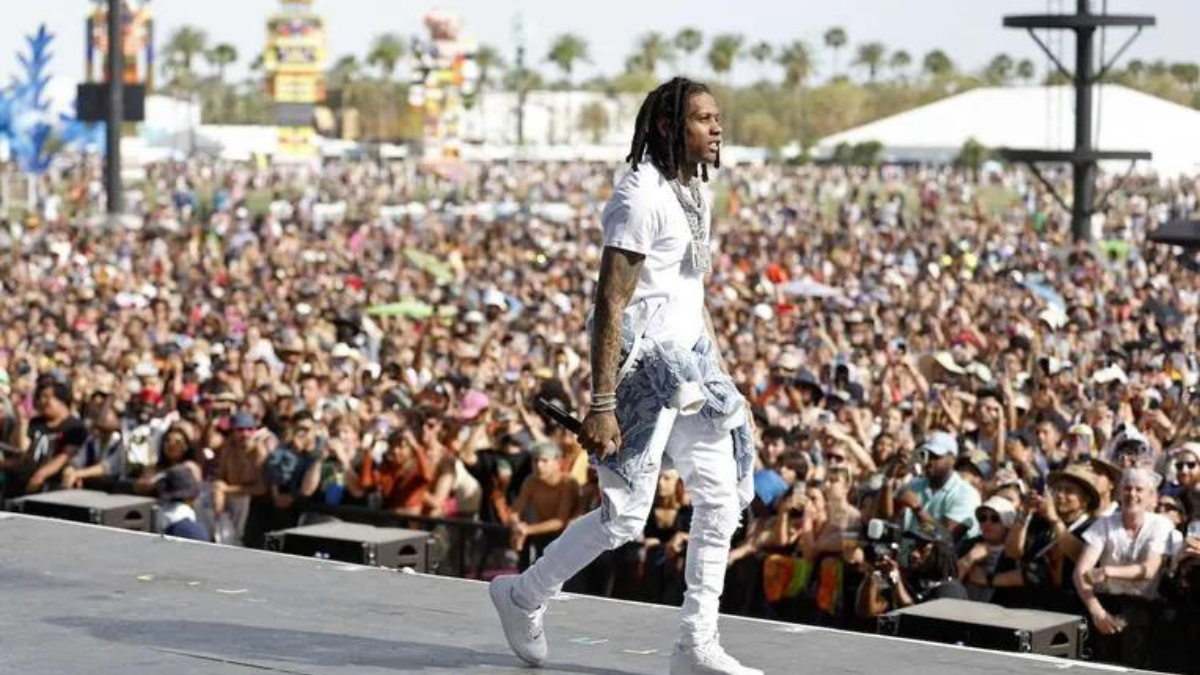



Dan Runcie


Lizzo at a concert in Minnesota (via Manitou Messenger)
Nicki Minaj’s NICKIHNDRXX Tour — canceled in North America. Chance the Rapper’s Big Day Tour — canceled everywhere. T-Pain’s 1UP DLC Tour — canceled. Cardi B’s Invasion of Privacy Tour— chose not to do one.
Touring’s traditional model needs work. Cancellations have happened for years, but this recent wave is different. Many hip-hop artists overestimate demand for ticket sales. We live in an era with endless data, but touring decisions still seem like the industry blindly throws darts. Meanwhile, artists who can sell out those same venues have proudly taken new approaches. These trends are connected.
The popularity of music festivals and concert residencies have added new variables to the live performance mix. Mainstream artists are on a quest to maximize each option. Some are farther along than others. But by the time the majority of rappers find the ideal balance, the touring business might be behind the curve.
Opportunity cost is higher than ever
When artists are on tour, they’re on the road day-in, day-out. It’s traditionally seen as a justifiable tradeoff since many artists earn a majority of their revenue from touring. But it’s still time-intensive, laborious, and costly.
Here’s what I wrote in 2018 in Why Choosing the Right Concert Venue Matters:
A few years ago, Beyoncé, like Drake, once played it safe with concert tours. In 2013 and 2014, The Mrs. Carter World Tour earned an impressive $230 million, but it took Queen Bey 132 shows and twelve months of touring to do so…
Had Beyoncé subjected herself to the same arenas for [On the Run Tour, The Formation World Tour, and On The Run II Tour], she would have needed to perform an additional 207 shows since 2014 to match the $565 million her concerts have grossed in revenue. It would have been impossible to do all those shows while pregnant with the twins, make Lemonade, and do all the other stuff Beyoncé does.
There’s only a handful of artists like Beyonce who can justify the jump to a stadium. For the rest, festivals and short-term Las Vegas residencies are a viable alternative.
But even Taylor Swift has moved on from stadium tours. This summer the 1989 singer will do a European festival run (like Cardi B did last summer), then launch her own festival, Lover Fest, in Boston and Los Angeles. It doesn’t get more 2020 than that.
In an August interview with Ryan Seacrest, she explained why she didn’t do a traditional tour:
“I’m not quite sure what we’re doing with touring. I don’t want to do the same thing every time because I don’t want my life to feel like I’m on a treadmill. There’s a lot that goes into touring that nobody knows about — like you have to reserve stadiums like a year and a half in advance, and that to me is a lot. With ‘Reputation,’ I knew that nobody would really fully understand the album until they saw it live, but this album is different because people are seeming to get it on the first listen.”
All that’s true, but let’s remember two things. First, Taylor is in a select group of artists who can sell out the Rose Bowl, Soldier Field, and MetLife Stadium on back-to-back nights. She wouldn’t forgo that opportunity unless it made financial sense. Second, she’s right about the challenge in reserving venues eighteen months in advance. It’s especially frustrating for those who rise quickly and can’t easily pivot. It’s a good problem to have, sure. But it’s still a problem.
Last year, Lizzo rose to stardom so fast that she outpaced her touring revenue. According to Billboard, last spring’s Cuz I Love You Tour was performed in front of crowds of less than 2,000 people, grossing just over $50,000 per night. To capitalize on her momentum, she came back in the fall with the Cuz I Love You Too Tour at venues that were twice the capacity. But by that point “Truth Hurts” was #1 on the charts and nominated for Grammys. She still couldn’t keep up.
My wife and her friends bought tickets for Lizzo’s October show in San Francisco. They bought tickets at face value back in May for $50. The week before her show they were selling on StubHub for $350! It was a scalper’s dream but an artist’s biggest frustration. All the value was captured by the secondary market. Sure, there’s a chance Lizzo pulled a Metallica-Live Nation and scalped her own tickets. But if that ever happened… whew buddy. The Lizzo hive (and the anti-Lizzo hive) would have burned the internet down by now.
Hip-hop has an uphill battle
The mentality required to succeed in hip-hop and touring is in direct conflict. Most mainstream rappers take pride in beating the odds. They had to bet on themselves to make it this far. Why stop now?
But touring requires far more pragmatism. It’s economics. When supply meets demand, everyone’s happy. Those economics can be especially challenging for hip-hop though, where its streaming popularity outweighs its touring performance.
In a 2018 Wall Street Journal article, Neil Shah broke down how hip-hop may rule the record industry, rock is still king on the road:
There are many reasons that rock remains so powerful on the road, including that, as an older genre, it had a head start on pop and rap. Giant tours by older rap icons like Jay-Z aren’t as common. Fans of newer hip-hop artists skew younger, including teens with less disposable cash, making festival gigs more economical than lengthy, sprawling tours.
“Drake can do four Madison Square Garden shows, but Phish can do 17,” says Peter Shapiro, a New York-based independent concert promoter. Especially in the day-to-day business of clubs and theaters, rock bands, he adds, “still have a huge impact.”
This can make it mistakenly easy for an artist who dominates on RapCaviar or SoundCloud charts to think they are ready for the biggest stages available. Of the top 10 global tours of 2019, none of them were hip-hop. In 2018, just one (Beyonce and Jay Z’s On The Run II). Genre plays a factor.
A good clip from The Joe Budden Podcast where they break down Chance’s canceled tour.
Artists bet on themselves, which is costly
Challenges arise when artists who were once the hot kid start to cool off and need to accept reality. They might not be DONE done, but their prime days are behind them.
That’s where Nicki Minaj and Chance the Rapper are at. Neither admitted that low demand drove their cancellations, but we can follow T-Pain’s humble advice and read between the lines. Several industry insiders believe that both Nicki and Chance couldn’t sell enough tickets to fill 25+ arenas across the US. (I also covered Nicki’s ticketing woes in the Globalization of Hip-Hop, Part I and Chance the Rapper’s in a recent Member Update.)
When both rappers first announced these tours, I thought to myself, “Who the hell gassed them up to think they can still command an arena tour? Who signed this off?” There are plenty of fingers to point, but honestly, neither rapper needed extra convincing.
Keep in mind, Nicki spent the past decade silencing doubters who never thought a female rapper could reach the heights she did. Chance proved the industry wrong as an indie rapper who won Grammys and did arena tours. Their brand is to stay resilient when projections told them otherwise. You wanna go back in time and try to convince them that the lackluster responses to “Chun-Li” and “Groceries” were signs of what’s to come? Yea, good luck with that.
Their mentality is understandable, but it distorts reality. And as more superstars like Taylor and Cardi consider alternatives to touring, promoters may be stretched to fill those same venues with artists who can’t compete in that weight class. It will inevitably lead to more cancellations.
There are levels to this
The traditional touring model is extremely linear. There are tons of venue options for rising rappers who want to perform for a few hundred or a few thousand people. But the leap to arenas (~15,000) is no joke. The jump up to stadiums (~50,000+) is even steeper. The artists at the in-between stages are more likely to leave money on the table or cancel because they couldn’t sell.
The popularity of festivals, residencies, and private events add more options to meet demand:


As AR/VR capabilities develop, more of them will be added to this mix too
I made a similar chart last year on how the traditional albums model has evolved with “mixtapes,” visual albums, podcasts, and more. The trend is similar here. Increased options lead to more experimentation and put artists in control.
Where is this all heading?
This trend should be top of mind for both Live Nation and AEG, which own and operate thousands of venues. It should also concern those who individually manage their venues.
I don’t expect arenas to shorten the timeline for advance booking or cancellation policies. That’s the nature of events in popular venues, whether it’s a wedding or a Migos concert. But they can lean into the trend by pitching themselves as locations for festivals, residencies, private events, or mixed reality experiences. It may be hard to compete against the machine of Coachella, but Rolling Loud and plenty of other festivals are more open to working with what’s available.
By now, every rapper with a big enough following has had at least wondered, “What if I launched my own Astroworld or OVO Fest? Should I do a Vegas residency too?” As I laid out in Why Rappers Started Running Their Own Music Festivals, artists want to leverage their power and run the show. They want the money from the highest profit margin areas of live performance, like sponsorship and concessions. It’s the same model that Floyd Mayweather uses in his boxing matches. He rents out the building and collects the revenue from everything else.
Touring will always be key for the up and comers who want to meet their day-ones. It worked for Meg the Stallion in the rooftop cypher days and Cardi B in the Love & Hip-Hop days. It will always be a core for the legacy artists who can draw crowds wherever—like Rolling Stones, Elton John, or Jay Z. But there’s a whoooole lot of artists between up-and-comers and Hov.
These artist want more options, and the market can offer them. The rest of the industry will be forced to adapt sooner or later.
READ MORE: https://trapital.co/2020/01/09/the-hip-hop-touring-business-is-broken/


Dan Runcie
Founder of Trapital
Business
CHRIS BROWN: The Top Recording Artist ALIVE [Vocal Range]
Chris Brown, American recording artist, and an actor were born in Tappahannock, Virginia to Clinton Brown a corrections officer at the local prison and Joyce Hawkins, former director of a daycare center.
Published
1 year agoon
May 13, 2023By
Contributor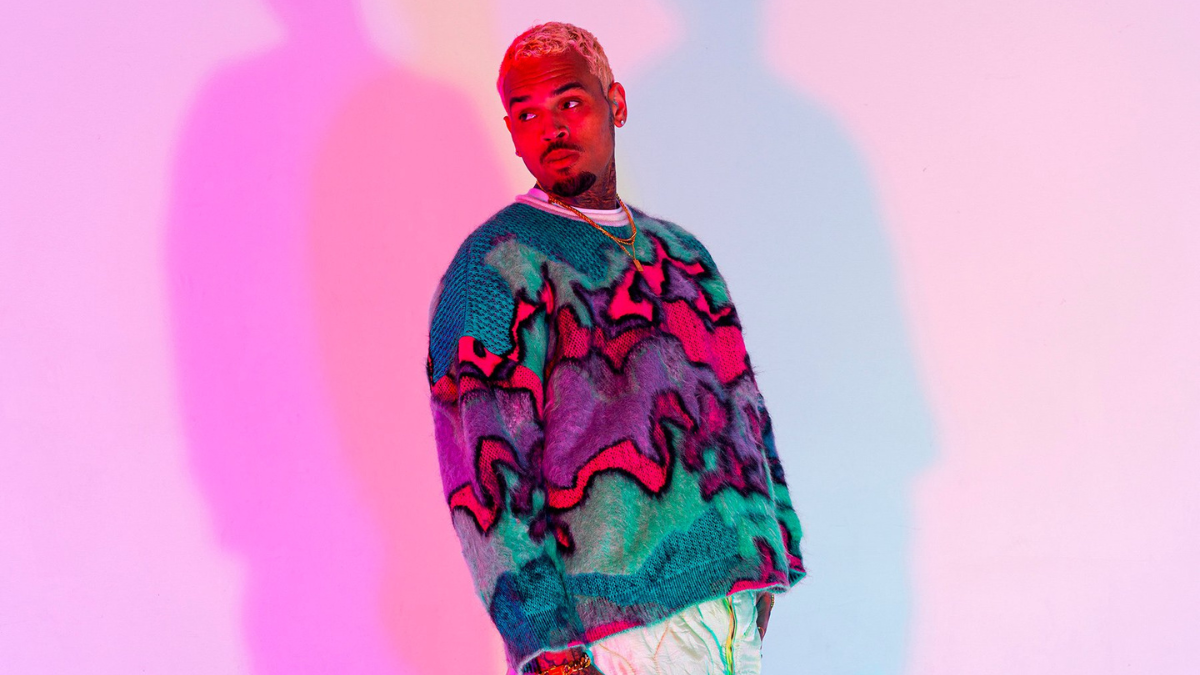

His keen interest in music and dance made him teach himself both the arts and he declares that Micheal Jackson was his role model. He also participated in the local church choir and local talent shows. His perfection in mimicry of an Usher performance made his mother realize his potential and she started looking for a record deal opportunity.


Chris Brown’s Voice Type & Vocal Range
Chris Brown has a light Lyric tenor vocal style. His vocal potential was first discovered by his mom when he was still a kid. Brown reveals to People magazine that he was 11 and watching Ushers performance ‘My Way’, and I began endeavoring to impersonate it. My mother resembled, ‘You can sing?’ And I resembled, ‘Well, no doubt, Mama.” in this way, and began to sing.
Voice Type: Light-Lyric Tenor
Range: E2-E5-G#5


Chris Brown’s voice sits high up. He has relative easiness in the fifth octave (Yeah 3x, This Christmas, Crawl). The strain really makes it difficult for him to sing there, yet he does not have much of a problem. He likewise sings to be a baritone in the E4-G4 range effortlessly.
Not so sure where this originates from, yet I have seen it many times previously. In fact, He is brighter and lighter than the spinto. Due to the fact that the spinto will have a more substantial, warmer and substantial voice. Chris’ voice is awfully splendid and light to be a spinto.
He has a light and thin voice. His voice is additionally surprisingly energetic. Thus he should be a light-verse tenor.
Achievements
At the tender age of sixteen, Chris Brown made his debut with an album titled “Chris Brown” featuring the runaway hit single “Run It”. This song topped the Billboard Hot 100 in 2005 making him the first male artist whose debut song topped the chart after Montell Jordan had achieved the same in 1995. The RIAA (Recording Industry Association of America) awarded the album a double-platinum certification and it sold more than 2 million copies in the US.
Riding on this success Chris Brown, American recording artist released his second studio album in 2007 November titled “Exclusive”. This album had two hit singles “Kiss-Kiss” featuring T-Pain and was number one and “With You” which became number two in the Billboard Hot 100 and was awarded a Platinum certification by RIAA. “The Forever edition” which is a deluxe version of his album with the single “Forever” was released in 2008 in May and this also peaked at number two position in Billboard Hot 100. “Graffiti” his third album was brought out in 2009 December and its official single “I Can Transform Ya” came up to number 20 in the Billboard Hot 100 becoming Chris Brown’s eighth hit on the charts.
Brown has other hits under his belt such as “No Air” with Jordin Sparks, “Shawty Get Loose” with Lil Mama and T-Pain, “Shortie Like Mine” with rapper Bow Wow all of which reached within number ten in the Billboard Hot 100. His dancing capabilities gave him an extra edge over other singers and he was compared to Micheal Jackson and Usher. On the negative side, Brown was given five years probationary sentence and 6 months community service for assaulting singer Rihanna. In 2010 May Chris Brown American recording artist brought out “Fan of Fan” a mixtape with Tyga and “Deuces” from this tape was released in 2010 June reaching the number one position in the U.S.
Musical Style & Influences
Chris Brown has referred to various artists as his motivation, overwhelmingly Michael Jackson. Chris Brown underlines that “Michael Jackson is the motivation behind why he involved himself in the music industry at the beginning of his music career. In “Fine China,” he represents Jackson’s impact both musically and outwardly as Britini Danielle of Ebony magazine mentioned that the melody was “reminiscent of Michael Jackson’s Off the Wall”.
And He also did mention that Usher is another role model in the music industry who seems to be a more contemporary figure for Brown. He discloses to Vibe magazine about Usher that he was the person who the youths gazed up to, in the singing and dancing world, admired him, and keeps up “If it was not for Usher, at that point Chris Brown couldn’t exist.”
Some critics suggested that Chris Brown’s first experience with R&B, perceiving his contemporary adaptions and flexibility in R&B music. As customary R&B prospered around him, the youthful singer started the development of the genre”. His first single “Run It!” as a “prelude to what Brown would keep on doing for the following decade: determinedly upset develops of blues and rhythm.
Business
TOURING AND THE SINGER
Touring artists experience a wide range of issues including physical and vocal fatigue, mental boredom, poor health…
Published
1 year agoon
May 10, 2023By
Contributor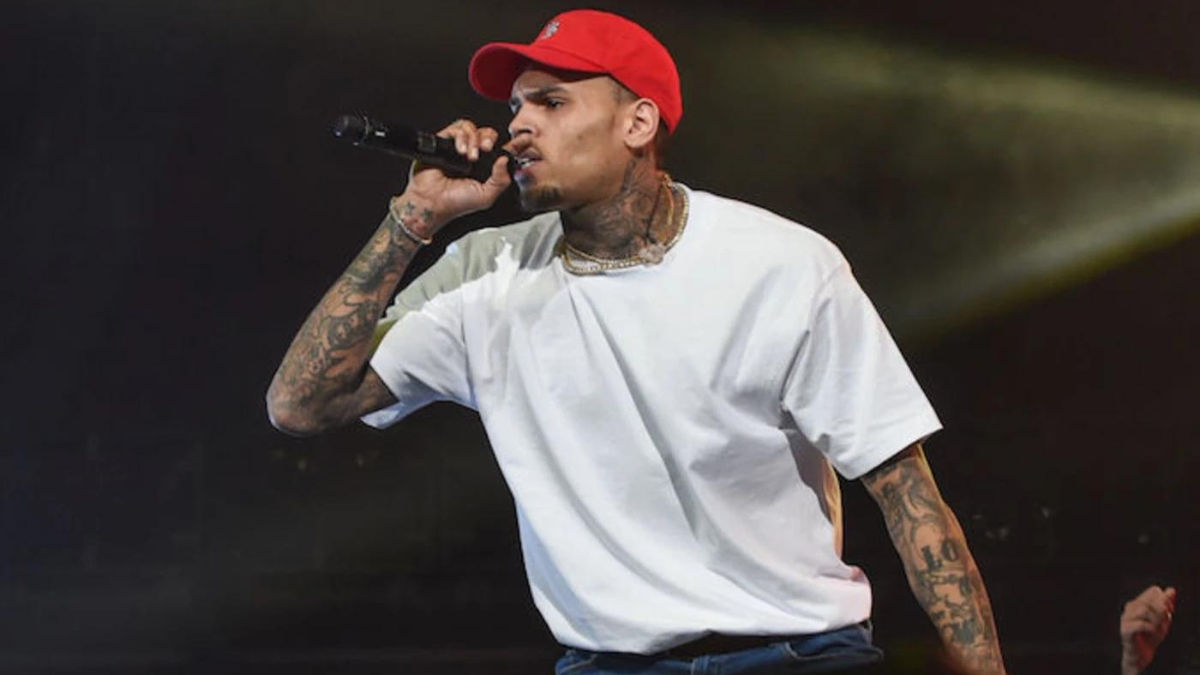

1. How important are vocal warm-ups and why?
Warm-ups are almost more important than vocal technique practice. It is vital to ensure we are getting the vocal ligaments and the intrinsic vocal muscles ready to do the job required during singing. When we talk we only use a limited range of pitches (around a major third or so) but when we sing we may use over two octaves. By warming up we are getting the different layers of the vocal folds ready to work at the higher frequencies required for singing. It is also important to get the larynx and the articulatory muscles ready to deal with singing lyrics. If we don’t get the voice ready and warmed up then we are running the risk of inducing vocal fatigue and ultimately misuse which could lead to vocal pathologies such as vocal fold oedema (swelling), nodules or polyps.
2. How important is vocal technique and why?
The reality is that there are many contemporary commercial singers with a successful career who do not have vocal technique to back their art or the vocal workload experienced as a touring singing/artist. It may be possible to get away with poor vocal technique in the short term or the studio setting, where it is possible to record as many tracks as necessary to get a good take. But when one is performing, live and touring, poor technique will eventually have a negative compound effect on the vocal folds, which increases the risk of injury. Having a well structured technical regime not only helps the singer to build range, stamina, strength and vocal control but will also help to readdress any imbalances acquired during the performance. Understanding how the voice works technically will help the singer to make the right choices when it comes to repertoire, vocal style, use of range or singing with a tired or sick voice.
When it comes to the creative side technique will ensure that the artist can realise their creative vision, to sing unhampered by limitations of vocal range, the ability to transition easily between registers, breath management, vocal tone, the ability to sustain long notes, vocal qualities and dynamic control.
3. What physical and mental effects can touring have on an artist? How can this contribute to vocal health problems?
Touring artists experience a wide range of issues including physical and vocal fatigue, mental boredom, poor health, disruption to dietary and daily routines, feelings of isolation from friends and family. Whether they are travelling in a band van, tour bus or flying, most artists suffer from disruption in sleep, daily routine, dietary habits etc. When there is a group of people travelling together in close proximity there is also an increase in risk for communicable illnesses such as colds and cases of flu. Flying may cause dehydration and vocal fold swelling due to an increase in atmospheric pressure. This may cause the voice to be husky or hoarse and limit the singer’s ability to access their upper/lower ranges. Environmental conditions such as air-conditioning, heating, humidity, dryness, altitude and cold temperatures will also impact the singer’s physical, mental and vocal health. In addition, if they are crossing time-lines then jet-lag will contribute by reducing physical and mental function. Being tired, stressed, rundown or dehydrated will impact the vocal fold’s ability to function optimally resulting in loss of range, tonal quality and sustainability.
4. Are vocal health problems more common today? Or do you think artists are more open about their health as it is mediated in the press more?
I think it is a combination of instant media and the kind of pressure, vocally and physically the current day artist is under. Pressure to ensure they sell their music and make money for their label etc. This means that they tour heavily and they are obliged to do a heavy load of publicity and networking, in turn, their voice does not get as much rest as it needs to do its job on stage night after night. Depending on the label/management tours may be more intensive with more performances packed in over a shorter period. Some labels have a policy of not allowing their artist to do more than three shows in a row, but not all artists are well looked after in this way. In the past, it would have been viewed more negatively by the public/fans if they knew that the artist was having vocal problems. Today people seem to think it’s par for the course as there is so much in the media about singers who have to cancel tours and gigs due to voice problems.
5. If there is no option to cancel a show a steroid injection may be required. What are the effects of this? Is it only temporary? Can it do more harm than good?
Steroid injections can be very effective in the short-term to help a performer get through a show. When a major artist cancels it means the loss of millions of dollars. So the management tries hard to prevent this from occurring. One-off steroid injections do not commonly have long-term medical side-effects. It only becomes problematic when this becomes a regular dose. Having an injection does carry a risk of injury if it is not done safely and accurately. High or prolonged doses of steroids (injections or tablets) will impact the body systemically e.g. excess fat distributed weirdly, prone to infections, and a risk of injury to the vocal folds such as nodules, haemorrhage or laryngitis.
Given appropriately and safely a steroid injection can save the day.
6. Are there any other ‘quick fix’ medicines that are used on tour? What are the effects?
I can’t think of any. I imagine any kind of analgesia that helps with pain might be used in some cases. Depending on the type of the analgesia will depend on the side effects. Obviously, narcotics run the risk of dependency and poor motor control. Some of the more common over the counter types such as paracetamol and codeine can cause constipation if taken regularly. Salicylates (e.g. aspirin) act as blood thinners and are not recommended for singers as a possible side-effect could be vocal fold haemorrhage.
7. Is it necessary to have surgery or will the body fight back if it’s allowed complete vocal rest?
Surgery depends on the type and severity of the vocal pathology as well as the time constraints of the artist. If there is pressure for the artist to get out and work e.g major tour, imminent album launch or significant performance then the powers that be are more likely to opt for surgery. If the artist/singer is not under such pressure or can’t afford surgery then alternative options may be considered at first.
- These days vocal nodules are generally treated with therapy and vocal technique if they are in the pre-nodular or soft stages. Some surgeons will treat hard nodules with surgery, though I have seen cases where nodules have not been surgically removed and the singer had successful rehabilitation through voice therapy and correction of poor vocal technique.
- Vocal polyps and severe haemorrhages, cysts and granulomas generally require surgical intervention. The singer is then on vocal rest for 2-3 weeks.
- Vocal oedema requires rest and addressing the cause.
- Infections and laryngitis do not require surgery.
It very much depends also on the doctor i.e. their training and experience. An ENT surgeon or ENT/laryngologist who works with singers a lot will tend to only do surgery if necessary, and there is no response to voice therapy and/or addressing the cause.
Vocal rest will help in many instances but the problem may re-occur if the cause is not addressed. Many common voice issues in singers can be dealt with through rest, rehydration, good vocal technique and a balanced healthy diet.
8. Do you think audiences have higher expectations when going to watch an artist perform? ie: Pitch, physically performing.
With the use of auto-tuning in the studio, audiences have come to expect a singer to sing perfectly. This is compounded by the impact of music videos and the use of lip-syncing, as well as the use of auto-tuning in the live setting. Having said that the general listening audience is not always focusing on things such as pitch or even lyrics, for them, it’s the experience of the live performance.
9. What is your advice for a singer going on tour?
Where possible sleep – cat naps are as useful to the body as whole night sleeps, ensure you are getting 1.5 to 2 L of water a day, take dietary supplements, avoid respiratory infections like the plague. Take your own pillow on tour, healthy snacks, eyeshades, earplugs, nebulizer with normal saline, throat massager and most importantly straws so you can do regular straw therapy.
Don’t expect your voice to be able to work optimally if you don’t look after it, excessive talking, alcohol, smoking, drugs, poor diet and late nights will prevent your voice from working to its best.
At the end of the day, this is your job and what your audience is paying for. You are the equivalent of a vocal athlete. Follow these tips:
- maintain a regular and personalised vocal exercise regime
- do warm-ups and downs before/after a performance
- if possible change repertoire, vocal range and performance energy to accommodate the days when you or your voice are fatigued
- check in regularly with a vocal coach who understands how to keep you vocally fit and healthy
- do physical exercise to ensure your body is supporting your voice.
- Keep well hydrated
- Maintain a healthy and balanced diet with supplements to boost your immune system
- sleep whenever possible
- avoid sick people!


Why Are So Many Rap Concerts Getting Canceled?



CHRIS BROWN: The Top Recording Artist ALIVE [Vocal Range]


TOURING AND THE SINGER
Trending
-



 Business2 years ago
Business2 years agoThe Day Jordin Sparks Stopped Singing
-


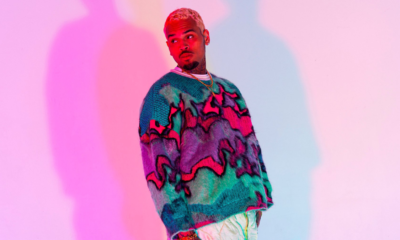


 Business1 year ago
Business1 year agoCHRIS BROWN: The Top Recording Artist ALIVE [Vocal Range]
-



 Business2 years ago
Business2 years agoTVM-TV LIVE
-

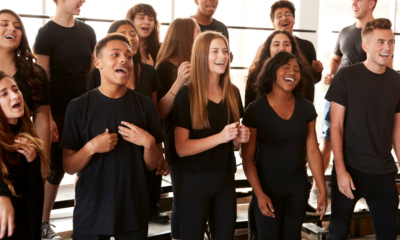

 Business2 years ago
Business2 years agoBenefits of Joining a Choir
-

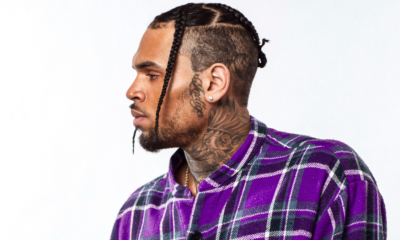

 Business2 years ago
Business2 years agoChris Brown’s 12th Studio Album “Breezy”
-

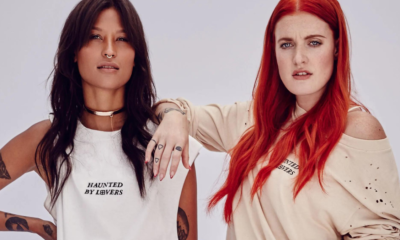

 Tech7 years ago
Tech7 years agoICONA POP
-



 Business2 years ago
Business2 years agoFood for Singers: The Diva Diet
-

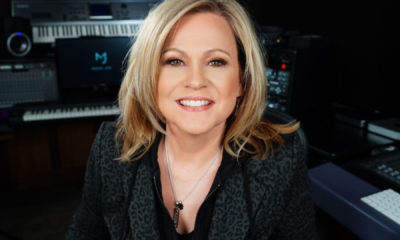

 Business2 years ago
Business2 years agoINTERVIEW WITH MAMA JAN

